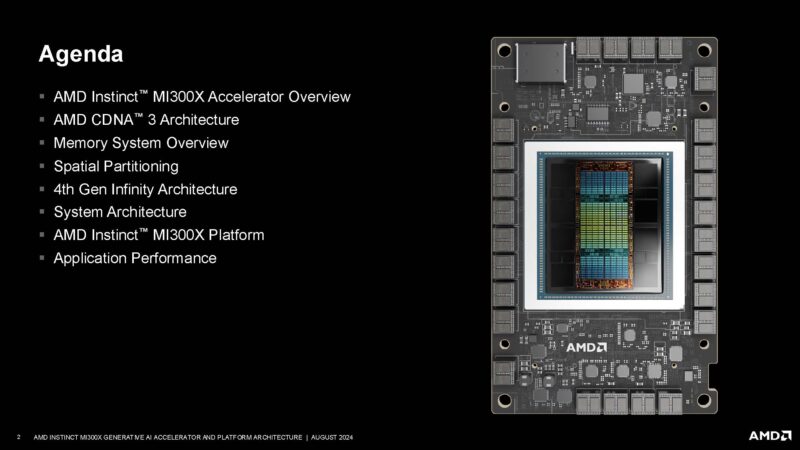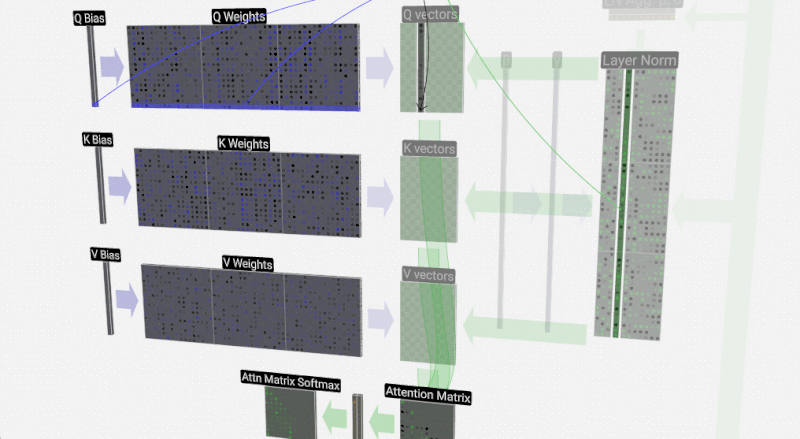
Cohere’s Enterprise AI Revolution: Scaling LLMs with Advanced Hardware and Practical Code
The landscape of artificial intelligence is no longer dominated by a single paradigm. While consumer-facing chatbots have captured the public imagination, a quieter, more profound revolution is happening within the enterprise. At the forefront of this movement is Cohere, a company laser-focused on building large language models (LLMs) specifically for business applications. Unlike many competitors, Cohere’s philosophy centers on data privacy, model customization, and deployment flexibility, addressing the core needs of modern enterprises. This enterprise-first approach is now being supercharged by strategic hardware collaborations, enabling unprecedented performance and scalability for demanding workloads. As businesses move from experimenting with AI to integrating it into core operations, understanding the technical underpinnings of platforms like Cohere is crucial. This article delves into the technical architecture of Cohere’s offerings, provides practical code examples for implementation, and explores how the synergy between advanced AI models and cutting-edge hardware is shaping the future of enterprise intelligence.
Understanding Cohere’s Core APIs: The Building Blocks of Enterprise AI
Cohere’s power lies in its suite of powerful, purpose-built APIs: Generate, Embed, and Rerank. These three components serve as the fundamental building blocks for creating sophisticated, production-ready AI applications, from advanced search engines to complex workflow automation tools. Each API is optimized for a specific set of tasks, allowing developers to construct robust solutions with remarkable efficiency.
The Generate API: Powering Conversational AI and Content Creation
The Generate API is the engine for text generation. It takes a prompt and produces human-like text, making it ideal for chatbots, summarization, copywriting, and code generation. The latest models, like Command R+, are specifically designed for enterprise use cases, featuring a long context window and advanced Retrieval-Augmented Generation (RAG) capabilities. Here’s a basic example of using the Cohere Python SDK to generate text.
import cohere
import os
# Initialize the Cohere client
# It's best practice to use environment variables for your API key
co = cohere.Client(os.environ.get("COHERE_API_KEY"))
# A simple prompt for the model
prompt = "Write a professional email to a client confirming the project kickoff date for next Monday."
# Call the generate endpoint
response = co.generate(
model='command-r-plus',
prompt=prompt,
max_tokens=300,
temperature=0.5,
k=0,
stop_sequences=[],
return_likelihoods='NONE'
)
print('Generated Email:\n', response.generations[0].text)The Embed API: Unlocking Semantic Understanding
Perhaps one of Cohere’s most powerful offerings is its Embed API. It converts text into high-dimensional numerical vectors (embeddings) that capture semantic meaning. This allows machines to understand the relationships between concepts, not just keywords. These embeddings are the foundation of modern semantic search, recommendation systems, and text classification. Cohere’s latest embedding models are highly ranked on benchmarks like the MTEB leaderboard, a testament to their performance. This is a critical component discussed in many circles, from Hugging Face News to PyTorch News, as embeddings are fundamental to deep learning with text.
import cohere
import os
co = cohere.Client(os.environ.get("COHERE_API_KEY"))
texts_to_embed = [
'What is the capital of Canada?',
'The latest advancements in GPU technology.',
'Ottawa is the capital city of Canada.',
'How to make a delicious carbonara pasta.'
]
# Use the embed-english-v3.0 model for high-quality embeddings
response = co.embed(
texts=texts_to_embed,
model='embed-english-v3.0',
input_type='search_document'
)
# The response contains a list of embedding vectors
for i, embedding in enumerate(response.embeddings):
print(f"Embedding for text {i+1} (first 5 dimensions): {embedding[:5]}")
print(f"Vector dimension: {len(embedding)}\n")The Rerank API: Refining Search for Maximum Relevance

The Rerank API is a game-changer for enterprise search. After an initial retrieval step (e.g., from a vector database like those covered in Milvus News or Pinecone News), Rerank takes a query and a list of documents and re-orders them based on contextual relevance. This dramatically improves the quality of search results by pushing the most accurate information to the top, which is crucial for building reliable RAG systems.
Practical Implementation: Building a High-Fidelity RAG System
Retrieval-Augmented Generation (RAG) is the cornerstone of modern enterprise AI. It grounds LLMs in factual, up-to-date information from a company’s private knowledge base, mitigating hallucinations and ensuring responses are relevant. Cohere’s APIs are perfectly suited for building a sophisticated RAG pipeline.
The RAG Pipeline Architecture
A typical RAG system using Cohere involves several key steps:
- Data Ingestion & Chunking: Internal documents (PDFs, wikis, etc.) are loaded and split into manageable chunks. Frameworks featured in LangChain News or LlamaIndex News excel at this.
- Embedding: Each chunk is converted into a vector embedding using Cohere’s Embed API.
- Indexing: The embeddings and their corresponding text are stored in a specialized vector database like Chroma News or Qdrant News favorite, Qdrant.
- Retrieval: When a user asks a question, the query is embedded, and a similarity search is performed in the vector database to retrieve the top-k relevant chunks.
- Reranking: The retrieved chunks are passed to Cohere’s Rerank API to identify the most relevant passages.
- Generation: The original query and the top reranked passages are fed as context to Cohere’s Generate API to produce a grounded, accurate answer.
This multi-step process ensures high-quality, verifiable answers. The following code demonstrates a simplified version of steps 4, 5, and 6.
import cohere
import os
# Assume 'vector_db' is a client for a vector database like Pinecone or Weaviate
# and it has a method 'search' that returns a list of document texts.
from some_vector_db import vector_db
co = cohere.Client(os.environ.get("COHERE_API_KEY"))
def answer_question_with_rag(query: str):
# Step 4: Retrieval (Simplified)
# In a real app, you would embed the query first.
print("--- 1. Retrieving documents from vector store ---")
retrieved_docs_text = vector_db.search(query=query, top_k=25)
print(f"Retrieved {len(retrieved_docs_text)} documents.")
# Step 5: Reranking
print("\n--- 2. Reranking documents for relevance ---")
rerank_response = co.rerank(
model='rerank-english-v2.0',
query=query,
documents=retrieved_docs_text,
top_n=5 # Reduce the list to the top 5 most relevant
)
top_reranked_docs = [result.document['text'] for result in rerank_response.results]
print(f"Top 5 reranked documents selected.")
# Step 6: Generation
print("\n--- 3. Generating a grounded answer ---")
# We create a message history for the chat endpoint
context_docs = "\n".join(top_reranked_docs)
# Using Cohere's chat endpoint which is optimized for RAG
response = co.chat(
model='command-r-plus',
message=f"Based on the following documents, answer the user's question. Question: {query}\n\nDocuments:\n{context_docs}",
# In a real app, you would pass the documents via the 'documents' parameter for better performance
)
print("\n--- Final Answer ---")
print(response.text)
# Example usage
user_query = "What were the key findings in the Q4 2023 financial report?"
answer_question_with_rag(user_query)Advanced Techniques: Fine-Tuning and Hardware-Accelerated Deployment
For enterprises with highly specialized needs, off-the-shelf models may not be enough. Cohere addresses this through fine-tuning capabilities and a flexible deployment model, increasingly powered by high-performance hardware, a trend closely watched in NVIDIA AI News and by competitors.
Customizing Models with Fine-Tuning

Fine-tuning adapts a base model to a specific domain or task by training it further on a custom dataset. This can improve performance on tasks like sentiment analysis for industry-specific jargon, generating code in a proprietary programming language, or adopting a specific brand voice. While the process is computationally intensive, the Cohere platform simplifies it into an API call.
import cohere
import os
co = cohere.Client(os.environ.get("COHERE_API_KEY"))
# Create a fine-tuning dataset file in JSONL format
# Each line is a JSON object: {"prompt": "...", "completion": "..."}
# Example line: {"prompt": "Summarize this legal clause:", "completion": "This clause outlines the terms of non-disclosure..."}
# with open("my-finetune-data.jsonl", "w") as f:
# f.write('{"prompt": "...", "completion": "..."}\n')
# f.write('{"prompt": "...", "completion": "..."}\n')
# This is a conceptual example. You first upload the file, then start the job.
# The actual process involves using the Cohere CLI or multipart uploads.
try:
# The API call to create a new fine-tuned model
finetune_job = co.create_custom_model(
name="legal-document-summarizer-v1",
model_type="GENERATIVE",
dataset="path-to-your-uploaded-dataset.jsonl", # This would be a Cohere dataset ID
# Other parameters like hyperparameters can be set here
)
print(f"Fine-tuning job started with ID: {finetune_job.id}")
print("You can monitor the job status via the API or dashboard.")
except cohere.errors.CohereError as e:
print(f"An error occurred: {e}")
The Critical Role of Hardware Acceleration
The performance of LLMs, both for training and inference, is directly tied to the underlying hardware. This is where the latest Cohere News becomes particularly relevant. Collaborations with hardware giants like AMD and NVIDIA are essential for several reasons:
- Inference Scalability: Serving models like Command R+ to thousands of enterprise users simultaneously requires immense parallel processing power, which modern GPUs and AI accelerators provide.
- Fine-Tuning Efficiency: Training custom models is resource-intensive. Access to powerful hardware clusters reduces training time from weeks to days or even hours, accelerating the development cycle.
- Deployment Flexibility: Enterprises need options. Cohere offers its models on major cloud platforms like AWS SageMaker, Azure Machine Learning, and Vertex AI, as well as on-premise or in a Virtual Private Cloud (VPC). These deployments leverage hardware-specific optimizations like NVIDIA’s TensorRT or open standards like ONNX to maximize throughput and minimize latency. This flexibility is key for organizations with strict data residency or security requirements.
Best Practices and Ecosystem Integration
To maximize the value of Cohere, developers should follow established best practices and understand how it fits within the broader AI and MLOps ecosystem, which includes tools covered by MLflow News and Weights & Biases News.

Tips for Optimal Performance and Cost-Effectiveness
- Choose the Right Tool: Don’t use the powerful (and more expensive) Generate API for tasks that Embed or Rerank can handle more efficiently. For example, use embeddings for classification before resorting to a generation-based approach.
- Master Prompt Engineering: For the Generate API, the quality of the output is highly dependent on the quality of the input. Be specific, provide examples (few-shot prompting), and clearly define the desired format.
- Leverage Rerank to Optimize Context: RAG systems can be expensive if you pass too many documents to the Generate API’s context window. Use Rerank to aggressively filter down to the 3-5 most relevant documents, saving costs and often improving accuracy.
- Prioritize Data Security: For sensitive applications, always opt for private cloud or on-premise deployments to ensure your data never leaves your control. This is a key differentiator from other providers often discussed in OpenAI News or Anthropic News.
Integrating with the AI Stack
Cohere doesn’t exist in a vacuum. It integrates seamlessly with popular open-source frameworks and tools:
- Orchestration Frameworks: LangChain and LlamaIndex provide high-level abstractions for building complex applications like RAG agents, with native support for Cohere’s APIs. Tools like LangSmith can help debug these complex chains.
- Vector Databases: As the backbone of RAG, vector databases like Pinecone, Weaviate, Milvus, and Qdrant are essential partners for any Cohere-powered search application.
- UI Frameworks: Tools like Streamlit, Gradio, and Chainlit make it easy to build interactive demos and internal tools on top of Cohere’s backend, enabling rapid prototyping and user feedback.
Conclusion: The Future of Enterprise AI is Specialized and Scalable
Cohere has carved out a critical niche in the AI landscape by building a platform from the ground up to meet the rigorous demands of the enterprise. Its focus on security, customizability, and real-world business problems is a clear differentiator. The combination of its powerful Generate, Embed, and Rerank APIs provides a comprehensive toolkit for developers to build truly transformative AI applications.
The increasing importance of hardware partnerships underscores a fundamental truth in the AI industry: software and hardware are deeply intertwined. As models become more powerful, the need for optimized, scalable, and efficient hardware to run them becomes paramount. By securing these collaborations, Cohere is ensuring its enterprise clients can deploy AI solutions that are not only intelligent but also performant and cost-effective at scale. For developers and business leaders, the path forward is clear: leveraging specialized, enterprise-grade platforms like Cohere, powered by the next generation of AI hardware, will be the key to unlocking true business value and staying ahead of the curve.



